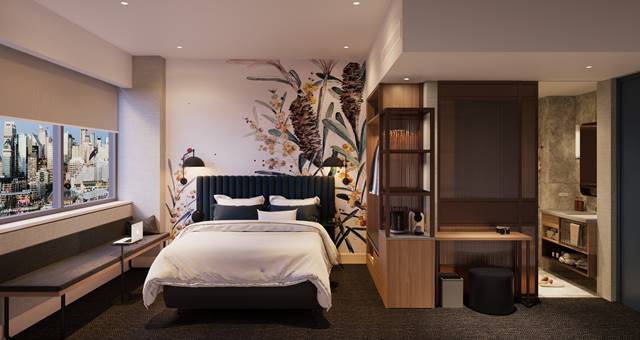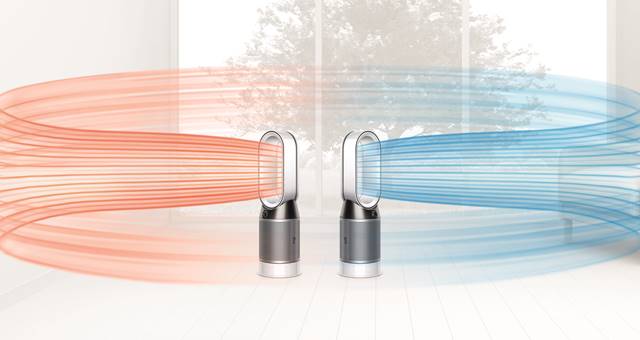You may not realise it in your day-to-day life but there is much more in the air we all breathe and not all of it is oxygen. In fact, according to some scientific papers, only 21% of what we take in is actual oxygen. Beyond that, the majority comprises gases such as nitrogen, carbon dioxide, argon and methane. Some experts have calculated that people typically inhale more than two tablespoons in volume of particulates each day.
While for most people, little thought is given to this as it amounts to little more than the odd casual annoyance, the focus on cleanliness among travellers has been heightened, particularly with the airborne capabilities of COVID-19 being an ever-present concern that is likely here to stay even after vaccines are widely distributed.
Innovation is the mother of invention and the past year has moved the spotlight onto air purifying products and technology for no other reason than to clean up our immediate environments and improve the quality of the air we breathe. Existing products have been thrust into the spotlight, new products have entered the cleanliness and hygiene lexicon and others have been refined with new formulations and techniques to achieve more pertinent and desired outcomes.
While the process was certainly robust before, hotels have invested heavily in new technologies to ensure no surface or space is spared from hygiene and disinfection along with ongoing preservation of air quality. Indoor ventilation has been a particular focus as hotels aim to eliminate as much as possible traces of any contaminants left behind, particularly as new strains of COVID-19 are brought under control.
Recently expanded to Australia, American technology firm, Delos, is now distributing air purification units capable of removing particles as small as 0.007 microns, including COVID-19, at 99.99% efficacy. To put that into perspective, the average human hair strand is 70 microns wide. According to Delos Australia President, Bill Giannikos, buildings need to be equipped with the best air quality monitoring systems to eliminate aerosol viral load.
“Sick building syndrome is amplified by poor air quality and ventilation systems and it is a genuine threat to the health of our community,” he said.
“Building owners and managers across all industries have a duty of care to protect the people who stay, work, live and play in their spaces – the same way they protect people from the elements that occur outside.”
Another technique increasingly being deployed is ozone disinfection, which is a method of sterilising surfaces and crevices to eliminate bacteria, dust mites, mould, fungal spores and other nasties including microparticles floating in the air.
Ozone Disinfection Australia General Manager, Steve Lowe, said the technology available for a full spatial clean, including down the back of beds, desks and inside nooks and crannies was now available in Australia.
“It’s extremely important for hoteliers to ensure their rooms and public areas are kept at a clean standard,” said Lowe.

“Programmed to produce only the specific amount of Ozone gas required to totally disinfect the space your cleaning staff are disinfecting; our Ozone generators then switch to a unique forced depletion cycle that quickly eliminates any residual Ozone from the room. Unlike traditional manual deep cleaning processes like spraying and wiping, fogging or misting, our high tech process is faster, more efficient, and unlike traditional cleaning, it disinfects any airborne particles floating in the air and the air ducts in the room.”
According to Dyson Global Category Director – Environmental Care, Charlie Park, the COVID-19 pandemic has significantly raised the profile of air purification and quality.
“Traditional air circulation and air conditioning systems usually contain a filter element. But in today’s climate of being cleaner and more hygienic than ever before, it’s worth interrogating what impact those filters are having,” Park said.
“In the examples that our engineers have looked at, those filters can tend to focus on capturing larger particles like dust or airborne debris with the ultimate goal of protecting the airflow systems within, rather than providing efficient particle removal.
“HVAC or not, this is where our technology comes in to either support existing ventilation systems with our highly efficient filtration, or to offer an alternative method of air exchange,” he continued.
“Dyson purifiers have sealed filtration systems, and HEPA-13 certified filters. It means they can capture not only the larger particles but those as small as 0.1 microns, including gases, bacteria and some viruses to ensure the indoor air meets guests’ expectations.”
One of Sydney’s upcoming hotels, Aiden by Best Western at Darling Harbour, has installed a Hydroxyl Generation Unit into its air conditioning systems, technology originally pioneered by NASA for use in the Space Shuttle which constantly generates hydroxyl particles into the air supply.

“Essentially, we install UV bulbs into our main outside air supply vents to produce ‘hydroxyls’ [which are] basically H20 molecules stripped of one hydrogen atom – hence the ‘OH’,” said Aiden owner Nicolas Chen of IHHL Pty Ltd.
“I understand that hydroxyls occur naturally in the atmosphere but we generate enough to disperse throughout the hotel guestrooms and common areas. Hydroxyls are claimed to neutralise COVID particles, volatile organic compounds and odours,” he added.
Known colloquially as the ‘detergent’ of the atmosphere, hydroxyl molecules are highly dynamic and work to destroy bacteria and virus particles by penetrating and neutralising their cell walls, eliminating biological and chemical contaminants.
It’s well known that harmful contaminants in the air can have a negative impact on health, however the role of air purifiers and more holistic atmospheric disinfectant cleaning technologies can play a major role in ensuring hotel rooms in the ‘new normal’ are sanctuaries of cleanliness when international tourism volumes gradually ramp back up to capacity.




